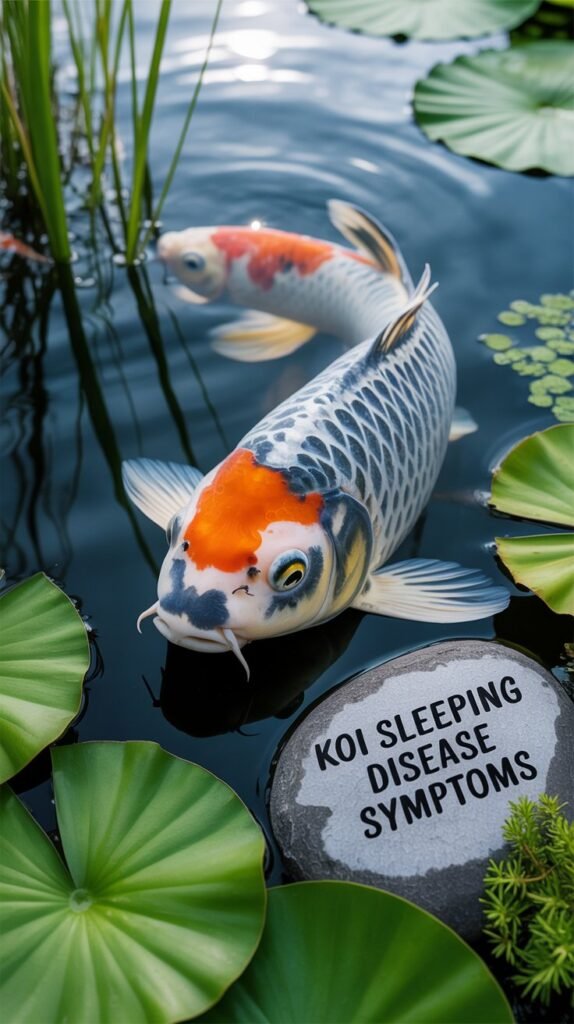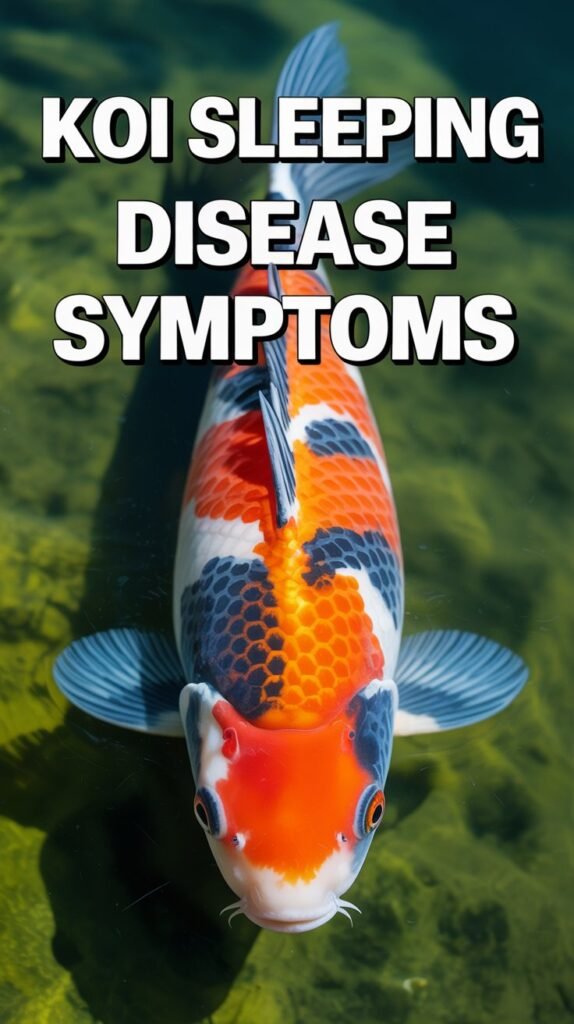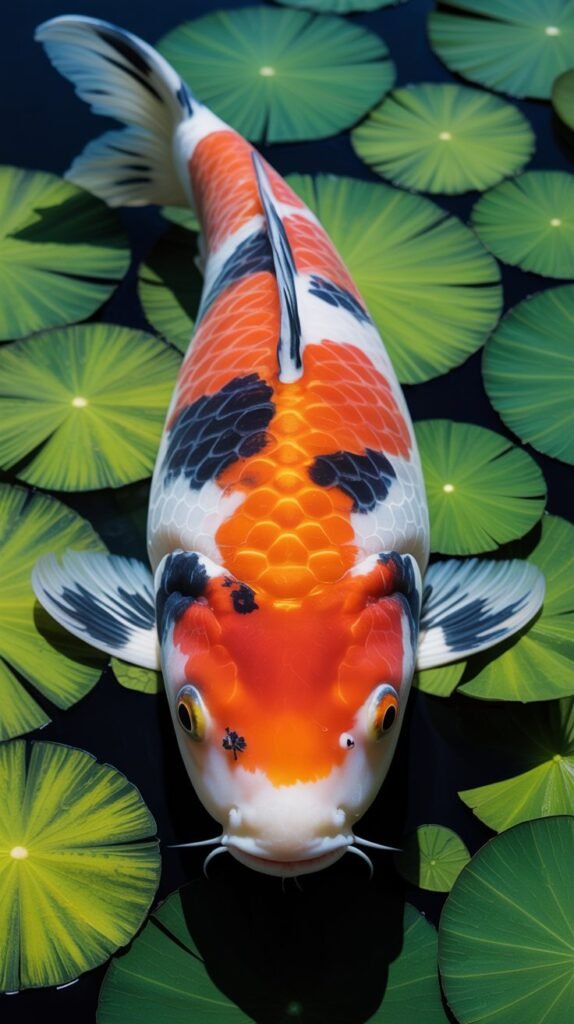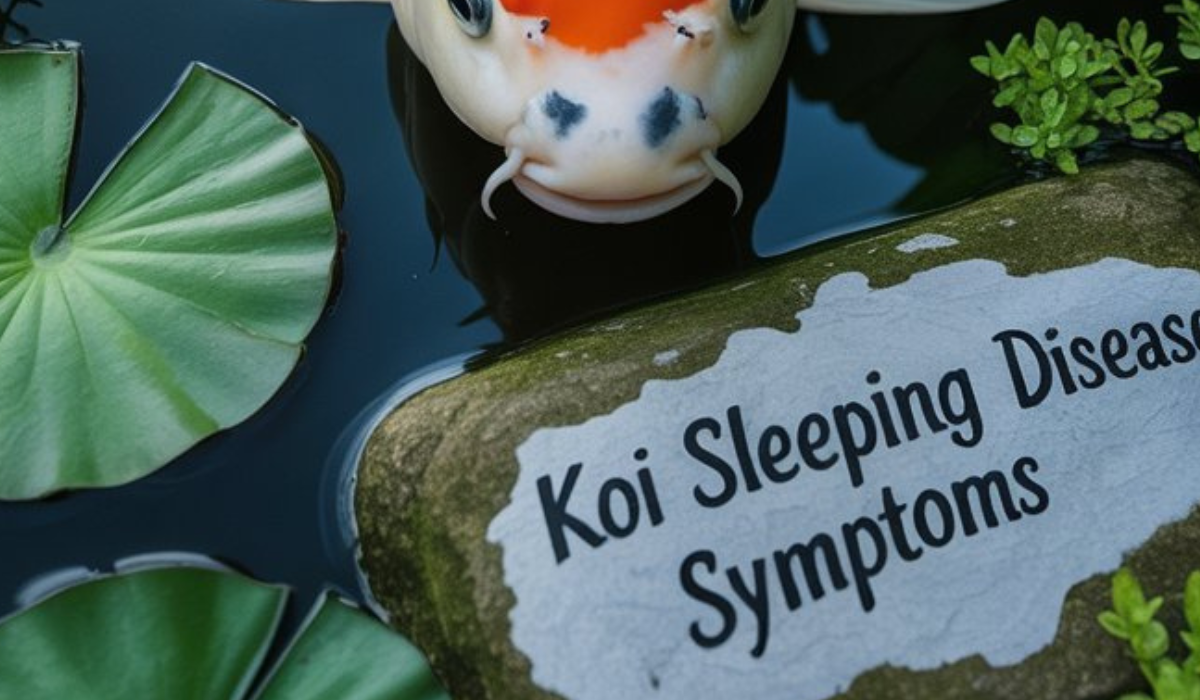Koi fish are among the most beloved ornamental species, admired for their vivid colors, graceful swimming, and cultural significance. Whether you are a hobbyist maintaining a backyard pond or a professional koi breeder, keeping koi healthy is always a top priority. However, koi are vulnerable to several viral and bacterial diseases, one of which is the notorious Koi Sleeping Disease (KSD).
This illness is particularly concerning because it often presents with unusual and misleading symptoms. Many koi owners initially mistake the fish’s behavior as simple resting, when in fact, the fish may be battling a potentially fatal viral infection. Recognizing the symptoms of koi sleeping disease early is crucial to reducing mortality and protecting the entire pond population.
In this comprehensive article, we will cover the details of koi sleeping disease symptoms, including early signs, advanced indicators, differential diagnosis, and preventive care. By the end, you will have a thorough understanding of how to spot this disease quickly and what steps to take to minimize its devastating effects.
What is Koi Sleeping Disease?
Koi Sleeping Disease (KSD) is caused by a Piscine Reovirus-like virus that specifically affects koi and carp. Unlike bacterial conditions, it cannot be treated with antibiotics, making prevention and early detection essential. The disease gets its name from the characteristic symptom where infected koi appear to be “sleeping” at the bottom of the pond. In reality, they are weak, lethargic, and struggling to function due to viral damage to their systems.

The disease is most severe in young koi fry and juveniles, though adults can also be affected under stress. Water temperatures between 15°C and 25°C (59°F–77°F) provide the optimal conditions for the virus to spread. Mortality rates can reach 50–70% in severe cases, making it one of the most dreaded koi illnesses.
Why Recognizing Symptoms Matters
Identifying koi sleeping disease symptoms early is vital for several reasons:
- Prevention of mass mortality: Acting quickly can save many fish from dying.
- Reduced spread: Early detection allows quarantine and biosecurity measures to be implemented before the virus infects the entire pond.
- Accurate diagnosis: Many koi diseases have similar symptoms, so careful observation is necessary to distinguish koi sleeping disease from conditions such as koi herpesvirus disease, gill flukes, or bacterial gill disease.
- Better supportive care: Recognizing the problem early gives fishkeepers a chance to provide temperature regulation, oxygenation, and nutritional support.
Early Symptoms of Koi Sleeping Disease
The first stage of infection often presents subtle signs that can easily be overlooked. Pond owners who know what to watch for can intervene early and reduce losses.
- Lethargy – Infected koi become less active, spending more time resting at the bottom.
- Clamped fins – Instead of spreading their fins naturally, koi hold them tightly against their bodies.
- Reduced appetite – Fish may show little interest in food or stop eating altogether.
- Unusual resting posture – Koi may rest awkwardly on the pond bottom, appearing as though they are asleep.
- Mild skin irritation – Excessive mucus may begin forming on their skin.
At this stage, the symptoms might look like normal stress responses. However, when multiple koi in a pond show similar behavior, it is a red flag.
Advanced Symptoms of Koi Sleeping Disease
As the disease progresses, symptoms become more obvious and severe:
- Prolonged bottom-dwelling – Fish spend long periods motionless at the bottom, only moving when disturbed.
- Weak swimming – Infected koi struggle to maintain balance, sometimes rolling or tilting.
- Lack of response to feeding – Even favorite foods may not attract their interest.
- Gill damage – Gills may appear pale, swollen, or necrotic, leading to difficulty breathing.
- Surface gasping – As gills weaken, koi may gasp for air at the surface.
- Excess mucus production – A thick, slimy coating becomes noticeable on skin and gills.
- Secondary infections – Because the virus weakens the immune system, bacteria and parasites often cause ulcers, sores, or fungal patches.
At this stage, mortality risk increases significantly, especially among young fish.
Visual and Behavioral Indicators

One of the reasons koi sleeping disease can be so deceptive is that the fish’s behavior strongly resembles natural resting. However, key differences set it apart:
- Healthy koi may rest occasionally but will respond quickly to disturbances or food. Infected koi often do not.
- Koi with sleeping disease may remain motionless for hours, even when the pond environment is otherwise stimulating.
- Their posture is often awkward, with fins clamped and bodies tilted.
- They appear weak rather than simply relaxed.
Differential Diagnosis: Distinguishing Symptoms from Other Diseases
Many koi diseases share overlapping symptoms, so it is important to compare koi sleeping disease symptoms with other conditions:
- Koi Herpesvirus Disease (KHV): Both diseases show lethargy and gill damage, but KHV often includes sunken eyes and severe gill necrosis.
- Gill Flukes: Cause gasping and clamped fins, but microscopic examination confirms the parasite.
- Ichthyophthirius (Ich): White spots on the body distinguish it from koi sleeping disease.
- Bacterial Gill Disease: Leads to mucus buildup and lethargy, but bacterial presence can be confirmed under a microscope.
Accurate diagnosis often requires laboratory PCR testing, but close observation of koi sleeping disease symptoms can guide fishkeepers in taking immediate precautions.
Environmental Triggers That Intensify Symptoms
While the virus is the root cause, several environmental conditions can make symptoms worse:
- Temperature fluctuations – Sudden drops or rises can stress koi, accelerating symptom development.
- Poor water quality – High ammonia, nitrite, or low oxygen magnify stress and worsen lethargy.
- Overcrowding – More fish in the pond means faster transmission and more severe outbreaks.
- Stress from handling – Netting or transporting koi can trigger latent carriers to show symptoms.
How Symptoms Progress Over Time
Koi sleeping disease symptoms follow a progression that can be roughly divided into three phases:
- Initial phase (1–7 days after infection) – Mild lethargy, reduced feeding, clamped fins.
- Acute phase (7–14 days after infection) – Severe bottom-dwelling, unresponsiveness, pale gills, mucus buildup.
- Chronic or recovery phase (2–4 weeks after infection) – Survivors may slowly regain strength, though some remain carriers.
Mortality Associated with Symptoms

The most dangerous stage is the acute phase, where koi display the strongest symptoms. Fry and juvenile koi are particularly at risk, with mortality reaching 70% or more. Adults have better chances of survival but still experience losses if supportive care is not provided.
Managing and Responding to Symptoms
Although there is no direct cure, koi keepers can take action to improve outcomes once symptoms appear:
- Stabilize water temperature around 25–27°C (77–81°F).
- Increase aeration to counteract gill damage.
- Perform water changes to maintain optimal quality.
- Add salt (0.3–0.5%) to reduce osmotic stress.
- Feed high-quality, immune-boosting diets with vitamins.
- Isolate sick fish in quarantine tanks.
Long-Term Considerations
Even after koi recover from visible symptoms, they may remain latent carriers of the virus. This means they can appear healthy but still spread the disease under stress. For this reason, ponds that have experienced koi sleeping disease outbreaks must maintain strict biosecurity moving forward.
FAQs About Koi Sleeping Disease Symptoms
Q1: What are the earliest symptoms of koi sleeping disease?
The earliest signs include lethargy, clamped fins, loss of appetite, and spending long periods resting at the bottom of the pond.
Q2: Why do koi look like they are sleeping?
The virus weakens their energy systems, making them too weak to swim actively, so they appear to be asleep.
Q3: Can koi sleeping disease symptoms look like other illnesses?
Yes, symptoms resemble gill disease, koi herpesvirus, and parasite infections, which is why accurate diagnosis is important.
Q4: Do all koi show the same symptoms?
No, symptoms vary in severity depending on age, health, and environmental conditions. Juveniles are more severely affected.
Q5: How fast do symptoms appear after infection?
Symptoms usually appear within a week, especially when water temperatures are in the 15–25°C range.
Q6: Is there a cure for koi sleeping disease?
No, there is no direct cure. Management focuses on supportive care, water quality, and boosting immunity.
Q7: Can koi recover from sleeping disease symptoms?
Yes, some koi recover, but they may remain lifelong carriers of the virus.
Q8: Do symptoms always mean the fish will die?
Not always. With good care, many koi can recover, though mortality is higher among young fish.
Q9: Can humans catch koi sleeping disease?
No, the virus only affects koi and carp, not humans.
Q10: How can I prevent symptoms from appearing in my pond?
Quarantine new fish, maintain excellent water quality, avoid overcrowding, and disinfect equipment regularly.

